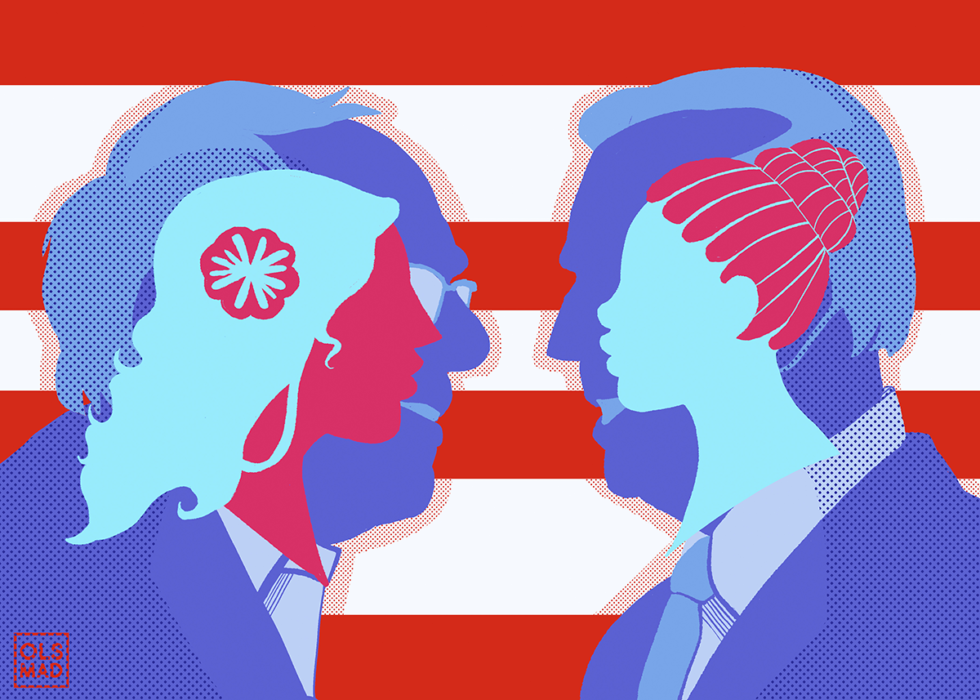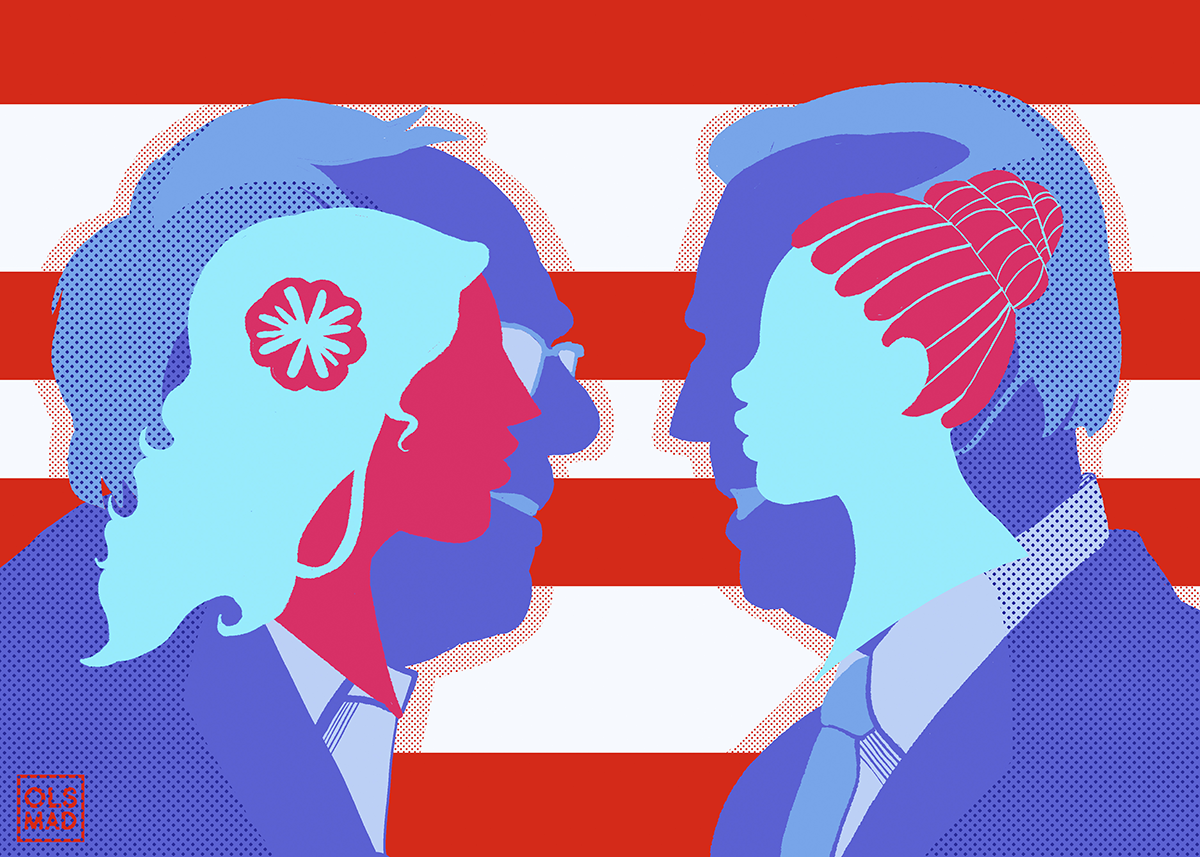
Following Super Tuesday, the Democratic presidential primary has been framed as a two-team fight: Bernie vs. Biden. In the corner of Vermont Senator Bernie Sanders are young progressives and Latinx people; after winning Nevada, California, Colorado, and Utah, the West is his turf. Meanwhile, former Vice President Joe Biden has moderate Democrats and black voters on his side, and accordingly has cleaned up in the East and South.
It’s a classic us-versus-them narrative, and one that’s generating a good deal of hand-wringing among some Democrats. But polls indicate the choice isn’t so black and white for black and brown voters. Support for both Biden and Sanders is so high among communities of color that, regardless of who wins the nomination, they’ll likely garner significant support when they square off against President Donald Trump in November. But to goose turnout — particularly among young voters — the eventual nominee will have to copy his opponent’s primary playbook.
“There’s this disconnect where white progressives and white moderates might oppose each other — if you vote for Sanders, you’re completely different from the Biden camp,” said Claudia Rodríguez, an analyst with the California political research firm Latino Decisions. “Black and Latino voters are extremely focused on defeating Trump. They will support whoever the nominee is for that purpose. So, the minority vote is less at war with itself than some of the political pundits would like us to believe.”
It was clear even before Super Tuesday that the outreach strategies of the Biden and Sanders camps were paying off. Ahead of the February 22 Nevada caucuses, Sanders’ campaign staffers knocked on doors in immigrant communities and hung out at the Las Vegas resort casinos where so many Latinx folks work.
“What is often forgotten is that, particularly in Latino communities and communities of color, the networks are very strong,” Susana Cervantes, Sanders’ field director in Nevada, told The Nevada Independent. “It just comes down to finding supporters and then asking them to talk to their friends, family, and neighbors.”
The strategy worked — Sanders captured 46.8 percent of the vote, and was considered the overwhelming favorite to win the nomination. So Biden copied it. Despite lackluster performances in the first three states to hold primaries, his outreach and ground game in South Carolina, the first state with a large black population to vote, delivered a win that swung the pendulum heading into Super Tuesday. The trend held: Biden captured 10 of the 14 Super Tuesday states, including a sweep of southern states with large proportions of black voters. Meanwhile, Sanders won in Utah, Colorado, and California — states with high proportions of Latinx Democrats. Texas, of course, was the outlier — Biden won the heavily Hispanic state, topping Sanders by four percentage points.
The implication of Super Tuesday is clear: To win over minority communities, campaigns need to enlist members of those very communities and spend tremendous amounts of time on the ground.
“We know our comunidades,” Joesé Hernandez, a Sanders campaign director in Orange County, California, told the Los Angeles Times. “To hear Bernie talk about the issues we’ve struggled against for years — rent control, health care, income inequality — and win on it reaffirmed what we’ve fought for.”
But here’s the thing: many black voters care about rent control, health care, and income inequality, too. So while a dominant post-Super Tuesday narrative is that Sanders and Biden are dividing Democrats, the opposite is the case, at least among many voters of color.
Take Sanders’ Hispanic supporters in California. A survey by Latino Decisions ahead of California’s primary found that 75 percent of likely Latinx voters there would choose Sanders over Trump in November, but 74 percent also said they’d vote for Biden in November. Conversely, there’s little evidence to suggest that black voters would bail on Bernie. A February poll commissioned by the Wall Street Journal and NBC News found that 89 percent of black voters would choose Biden over Trump, while 87 percent said they’d choose Sanders.
The wild card, particularly in diverse states such as Arizona, could be how young voters respond to the eventual nominee. The gap was evident in Texas, where exit polls suggest that younger voters, both black and Latinx, favored Sanders, while older ones sided with Biden.
“For the Latino vote in particular, the driver is the younger vote,” Rodríguez said. “The Latino electorate is getting younger. It’s the U.S.-born, second-generation children of immigrants who are entering the electorate for the first time. They are finding themselves, and finding the Sanders messages really resonates with them.”
All that isn’t to say Sanders and Biden have black and Latinx folks’ votes in the bag. “Turnout could be an issue,” said University of Denver political science professor Seth Masket. Hillary Clinton had high support among African Americans in 2016, he points out, but about 1.6 million black people who voted for Obama in 2012 stayed home during the 2016 election. “If Sanders were to end up the nominee, perhaps the turnout would be lower [than if Biden were the nominee]. But perhaps he would make overtures that would minimize that.”
Both candidates have a blueprint for such overtures. “Latinos and black communities are responding to campaigns that target and invest in them,” Rodríguez said. So, come November, if Sanders deploys his California strategy in South Carolina or Biden uses the Virginia method in Nevada, both are likely to build support among minority voters desperate to see somebody other than Trump in the White House.

